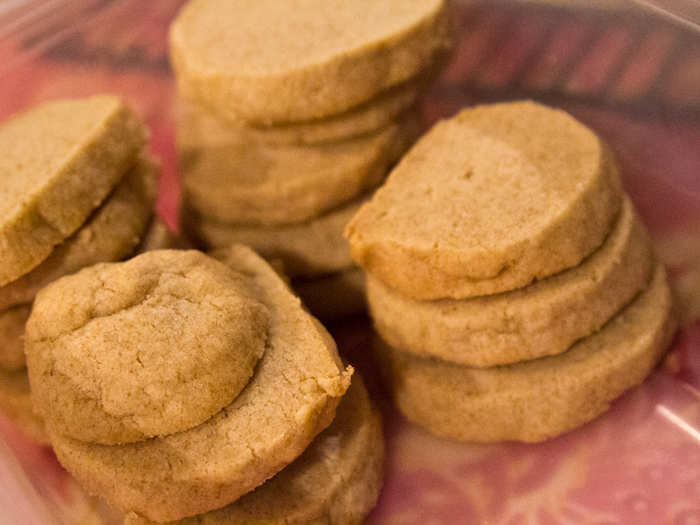
When it comes to learning languages, my boyfriend leaves me in the dust. He is fluent in English, Mandarin, and Cantonese. That said, there are still occasions when the appropriate English word eludes him and we are both left in the dark.
For example, while munching on a batch of shortbread cookies I had made, he told me how much he liked their “dusty” texture. After my look of horror, we quickly discovered that he’d really meant to compliment their “crumbly” texture.
Yet comparatively, my language skills leave much more to be desired. Aside from my quickly dissolving basic French, I speak no other languages. While this doesn’t create a language barrier for us, it can when we video-chat with his parents back home.
He’s taught me enough for a few confident Nǐ hǎo's, but the conversations still rely heavily on his parents’ English. To practice my Mandarin, we conduct frequent mid-dinner lessons where I try to (literally) get my mouth around Chinese tones.

Our relationship has a large focus on food — both preparation and consumption. While this passion is culturally indifferent, through many meals cooked together we’ve found that the preparation behind the food sometimes isn’t.
Take for example, the oven. As a baker, I’ve always viewed the oven as the focal point of the kitchen. It’s essential for creating not only delicious baked goods, but roasting vegetables, grilling pizzas, and even reheating leftovers.
When my boyfriend told me that many kitchens in China lack an oven, I was shocked. While I can’t imagine a kitchen without one, he says that almost all Chinese cooking can be done over a stovetop flame instead.
When it comes to taste, there are only two major points where our opinions vary: texture and sweetness. Growing up in the United States, I am used to only a few textures in my food – smooth, chunky, crunchy, and chewy.
In Chinese food the diversity of texture is much wider, and the crunching sensation of eating cartilage is still one I’m getting used to. Likewise, my boyfriend is still adjusting to how sickly-sweet American desserts can be. While fruit-based desserts like pies or tarts are generally safe, he’ll usually pass on a cupcake topped with a tower of frosting.

Bringing your significant other home is always a relationship milestone, but for us it has a few extra hurdles. Primarily, it’s expensive and time consuming to fly to China. As recently minted master’s students who can’t take much time away from work, that leaves Vermont as the more plausible option.
Vermont is a beautiful state, but when it comes to diversity it’s as white as the snow that covers it. To be precise, the Census Bureau reports that the state is just under 95 percent white. That’s a shocking figure, but growing up as a white person in a white state, it wasn’t something I always noticed.
However, it was one of the first things my boyfriend noticed when he visited Vermont. While he thankfully wasn't faced with any prejudice or racism on that trip, there is still something unnerving about being the only person to look or speak like you in a crowd of similar faces.
Like any couple, our relationship is built on the similarities we have as individuals, not the differences our cultures may have. However, it would be naïve to believe our cultures haven’t shaped us. Discovering these differences, misconceptions, and even biases are essential better understanding each other and each others’ families and backgrounds. Instead of driving us apart, they give us the opportunity to learn, and love, even more.
 In second consecutive week of decline, forex kitty drops $2.28 bn to $640.33 bn
In second consecutive week of decline, forex kitty drops $2.28 bn to $640.33 bn
 SBI Life Q4 profit rises 4% to ₹811 crore
SBI Life Q4 profit rises 4% to ₹811 crore
 IMD predicts severe heatwave conditions over East, South Peninsular India for next five days
IMD predicts severe heatwave conditions over East, South Peninsular India for next five days

Copyright © 2024. Times Internet Limited. All rights reserved.For reprint rights. Times Syndication Service.